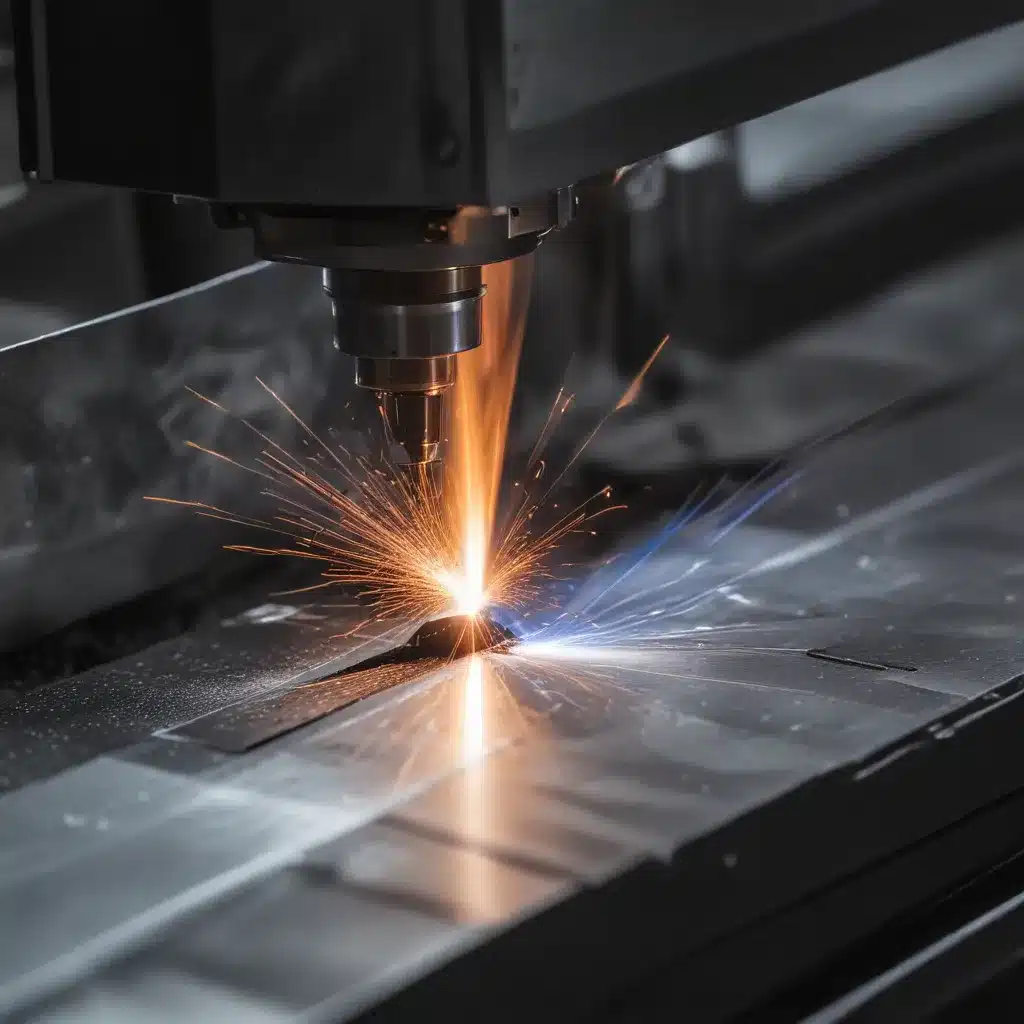
Mastering the Art of Pulsed Laser Welding for Diverse Metallurgical Challenges
As an experienced welder and metal fabricator, I’ve had the privilege of working with a wide range of materials and techniques over the years. One area that has always fascinated me is the art of pulsed laser welding, particularly when it comes to joining dissimilar metals. It’s a captivating process that requires precision, skill, and a deep understanding of the underlying metallurgical principles.
Pulsed laser welding is a versatile technique that allows us to tackle some of the most complex welding challenges in the industry. Unlike traditional welding methods, which often struggle with dissimilar metal combinations, pulsed laser welding offers a unique solution. By precisely controlling the energy input and the duration of the laser pulses, we can create high-quality, defect-free welds between metals that would otherwise be difficult, if not impossible, to join.
One of the key advantages of pulsed laser welding is its ability to minimize the heat-affected zone (HAZ) and the formation of intermetallic compounds. When working with dissimilar metals, these factors can be the bane of a welder’s existence, leading to brittleness, cracking, and other structural issues. But with pulsed laser welding, we can precisely regulate the heat input and the cooling rates, allowing us to create strong, reliable joints while minimizing the risks of these common challenges.
Navigating the Complexities of Dissimilar Metal Welding
Welding dissimilar metals is no easy feat, and it requires a deep understanding of the underlying metallurgical principles. Each metal has its own unique properties, such as melting point, thermal conductivity, and coefficient of thermal expansion. When these disparate materials are brought together, the challenges can seem daunting.
In traditional welding methods, the differences in these properties can lead to a host of issues, such as:
– Uneven melting and solidification
– Cracking due to thermal stresses
– Formation of brittle intermetallic compounds
– Corrosion and galvanic reactions
But with pulsed laser welding, we can overcome these hurdles by precisely controlling the energy input and the interaction between the materials. By carefully adjusting the laser parameters, such as pulse duration, energy density, and repetition rate, we can create a tailored thermal profile that minimizes the adverse effects and produces high-quality, reliable welds.
Harnessing the Power of Pulsed Laser Welding
One of the key benefits of pulsed laser welding is its ability to precisely control the heat input and the resulting microstructure of the weld. Unlike continuous-wave lasers, which deliver a constant stream of energy, pulsed lasers can be programmed to deliver short, high-intensity bursts of energy followed by periods of rest.
This pulsed approach offers several advantages:
1. Reduced Heat Input: The short duration of the laser pulses helps to minimize the overall heat input into the workpiece, reducing the size of the heat-affected zone and the formation of undesirable microstructural features.
2. Improved Penetration: The high-intensity laser pulses can penetrate deeper into the materials, allowing us to join thicker sections or create welds with a higher aspect ratio.
3. Enhanced Wetting and Mixing: The pulsed nature of the laser can help to improve the wetting and mixing of the molten metals, leading to stronger, more homogeneous joints.
4. Reduced Distortion: The localized and controlled heat input of pulsed laser welding can minimize thermal distortion, which is a common issue with other welding techniques.
By mastering the art of pulsed laser welding, we can unlock a whole new world of possibilities when it comes to joining dissimilar metals. Whether you’re working with steel and aluminum, titanium and stainless steel, or any other challenging material combination, pulsed laser welding can be a game-changer in your fabrication arsenal.
Precision and Repeatability: The Hallmarks of Pulsed Laser Welding
One of the most remarkable aspects of pulsed laser welding is its ability to deliver consistent, high-quality results time and time again. Unlike some traditional welding methods, which can be heavily reliant on the welder’s skill and experience, pulsed laser welding is a highly automated and programmable process that allows for exceptional repeatability.
By dialing in the precise laser parameters and maintaining a tightly controlled environment, we can achieve remarkable consistency in the weld quality, regardless of the specific materials or the part geometry. This level of precision is crucial in industries where reliability and performance are paramount, such as aerospace, automotive, and medical device manufacturing.
Unlocking the Potential of Dissimilar Metal Joining
As metal fabricators and welders, we are constantly challenged to push the boundaries of what’s possible. And when it comes to joining dissimilar metals, pulsed laser welding is a powerful tool that can help us unlock a whole new realm of possibilities.
Whether you’re working on lightweight, high-performance structures, corrosion-resistant assemblies, or complex multi-material components, pulsed laser welding can be a game-changer in your fabrication process. By mastering the nuances of this advanced welding technique, you can deliver precision, quality, and innovation that sets your work apart from the rest.
Embracing the Future of Welding with Pulsed Laser Technology
As technology continues to evolve, the field of welding is also undergoing a transformation. Pulsed laser welding is at the forefront of this revolution, offering metal fabricators and welders a powerful tool to tackle even the most daunting challenges.
By embracing this cutting-edge technology, we can not only improve the quality and reliability of our work but also open up new design possibilities and push the boundaries of what’s achievable in the world of metal fabrication. It’s an exciting time to be a welder, and I’m proud to be a part of this dynamic, ever-evolving industry.
So, whether you’re a seasoned pro or just starting out, I encourage you to dive deep into the world of pulsed laser welding. Explore the nuances, experiment with the parameters, and unlock the secrets that will propel your work to new heights. After all, the future of welding is in our hands, and with pulsed laser technology, the possibilities are truly endless.


